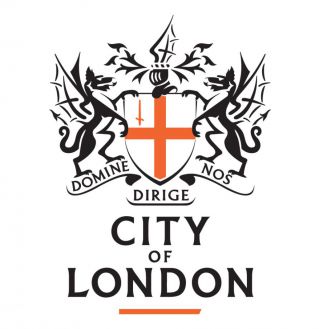New London Architecture
London urged to reaffirm its ‘attitude and positivity’
Thursday 22 October 2020

Bankside © 2020 Jason Hawkes for NLA

Bankside © 2007 Jason Hawkes
London needs to reaffirm some of the ‘attitude’, positivity and ambition that characterised its development highlights over the last 15 years, including ‘mega projects’ like the Olympics and exemplary mixed development like King’s Cross. But it also needs to remain open, reinvigorate its informed dialogue, consider widespread changes to travelling in and around the capital, and usher in a new period of cleaner air as it leads the world in the race to zero carbon. Those were some of the key thoughts to emerge from The Changing Face of London – Fifteen Years, a webinar which asked major shapers of the period to reflect on the period and look forward to a post-Covid London.
British Land’s Roger Madelin said that London was a much more liveable city than it was in the 1980s, but had to remain an ‘open and welcoming city’ if it is to remain an economic powerhouse, aided too by the built environment sector supporting politicians to instigate change. Things like the Urban Task Force had helped bring forward intelligent and informed debate on key urban issues, said Madelin, but that collective debate had started to reduce. ‘Let’s just be encouraged to intelligent debate’, he said. ‘We need to reinvigorate it’.
Stratford ©2020 Jason Hawkes for NLA
Stratford ©2020 Jason Hawkes for NLA

The City of London’s Annie Hampson had kicked off proceedings, in part hailing the positive contribution the instigation of the congestion charge had made. ‘I think it changed both the amount of traffic that was coming into London and it also enabled people to rethink and change their priorities’, she said. The Olympics and King’s Cross had made ‘hugely important contributions’ to the city, and the past 15 years had also brought recognition that the City ‘is not an island’ occupied by very large players but by a huge number of SMEs, and that heritage could play a key role in its rebirth. London needs to look to its mixed, more flexible spaces, focusing on culture and public realm, Hampson added.
Allies and Morrison partner Bob Allies said London had grown ‘internally’ rather than taken the traditional route of a city expanding its perimeter. But a key move was a move towards more and better placemaking, helped by a new generation of developers. ‘I think what has been really exciting about London in the last 15 years is that there's been a very widely shared recognition that simply building individual projects in this way is not enough and that what we have all had to get involved’. The city needs to adapt to the rise of new forms of transport like the electric scooter, rethinking the way London’s roads work, said Allies.
King's Cross © Argent
King's Cross © Argent

Jo Negrini, former chief executive of the London Borough of Croydon said the last 15 years had been ‘seismic’, mainly to do with ‘mega-projects’, but also including a new generation of tall buildings, within the context of a new London Plan and Opportunity Areas; London broken down into ‘manageable chunks’. A notable change had come in local authorities being much more proactive about the kind of development they need in their areas, addressing housing crisis by developing themselves, but permitted development had had a ‘huge impact’, Croydon having lost some 2 million square foot of commercial development to poor quality residential. Negrini said she feels an economic strategy for the city is missing, however, including the role of outer London, and that the future will focus on local people more protective about their environments.
‘I think the real battleground in the future is with the suburbs and how we, in the most empathetic way, approach the intensification of outer London as we’re trying to increase housing.’
Other speakers included The Crown Estate’s former chief executive Alison Nimmo, who spoke about the ‘sheer scale of change’ and weight of global money that came into the city, with major projects like The Shard and London Bridge Station having had a ‘huge impact’, in addition to the ‘magic time’ around the Olympics. ‘With the world watching, we delivered, big time’, she said. But London also needs to remember the climate crisis; her wish would be for cleaner air of the sort that was enjoyed during lockdown, and for London to lead the world in the race to zero carbon. And Colin Wilson, now head of regeneration, Old Kent Road, at London Borough of Southwark, said that one of the main things that had happened since 2005 was that planners like him had become ‘more assertive about doing planning’. A key challenge was in transport for a city that had always been predicated on a ‘basically Victorian pattern of commuting into London’, with a bigger role perhaps for the ‘local’ and suburban in future and what was needed now was a spatial London Plan that is accessible to Londoners, Wilson added. The striking thing, though, was how excellence had become ‘a kind of normal’, with ‘phenomenal’ changes having occurred to the point where, he said, it’s almost taken for granted.
Related
Exhibition
At 12.5 metres-long, the 1:2000 scale London model covers more than 85 square kilometres of London, 19 Boroughs and appr...

Video
Heng Leong Cheong is CEO of developer EcoWorld. The company is involved in a number of joint ventures including London C...
Watch videoStay in touch
Upgrade your plan
Choose the right membership for your business
Billing type:
Standard
£150.00
/month
£1,695.00
/year

Make your business and team part of London's built environment community.
Standard (small business)
£60.00
/month
£695.00
/year

Make your business and team part of London's built environment community, at a discounted rate for small businesses (less than 10 employees)
Partner
£525.00
/month
£5,950.00
/year

Account managed membership to maximise your profiling opportunities across NLA's programme.
Borough Partner
£400.00
/month
£4,750.00
/year

Account managed membership to maximise profiling opportunities across NLA's programme.
View options for
Personal membership
















